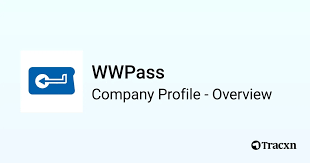Ideal Gambling Enterprises Approving Bitcoin: A Total Overview
August 25, 2025The History of Apple From Garage to Global Tech Giant
August 25, 2025
The WWPass Key App represents a modern approach to authentication that aims to eliminate the risks and inconveniences associated with passwords. For more information on the official product and downloads, visit WWPass Key App https://www.wwpass.com/wwpass-key-app. This article explains how the app works, why organizations adopt it, and how to plan a smooth deployment that improves both security and usability.
At its core, the WWPass Key App enables passwordless authentication by binding cryptographic keys to a user’s device and identity. Rather than relying on knowledge-based secrets that can be phished, reused, or forgotten, the application uses asymmetric cryptography to prove user presence and consent. Authentication typically involves the user’s phone or a dedicated security token acting as a private key store and signing device, while servers validate signatures with the associated public keys.
The user experience is designed to be intuitive. After initial setup and identity verification, users log in through familiar flows: they enter a username or scan a QR code, then approve the access request on their WWPass Key App. The approval can be secured by biometric confirmation or a device PIN, providing strong possession and attestation factors without requiring typed passwords. This model reduces friction for end users, who no longer need to manage complex password lists or one-time codes.
Security advantages of the WWPass Key App are substantial. Because private keys never leave the user’s device and cannot be phished via a fake login form, common attack vectors like credential stuffing and phishing-based credential theft are mitigated. The cryptographic operations are deterministic and verifiable, and the system supports mutual authentication so both the client and server can be assured of each other’s identities. Additionally, key lifecycle management — including revocation, rotation, and recovery policies — can be implemented centrally for enterprise environments.
From an enterprise perspective, WWPass Key App fits well into modern zero-trust and identity-centric architectures. It can be integrated with single sign-on (SSO) solutions, identity providers (IdPs), and custom applications via standard protocols and SDKs. Administrators can define policy controls such as allowed classes of devices, required attestation levels, and contextual constraints like geolocation or device posture. This provides a flexible framework for achieving compliance and reducing attack surfaces across cloud and on-prem systems.
Deployment planning is critical for a successful transition to passwordless authentication. Start with a pilot group that includes both technical and nontechnical users to validate process flows and training materials. Prepare clear enrollment steps, recovery procedures, and fallback authentication for exceptional cases. Consider integration points such as VPNs, remote desktop solutions, web applications, and privileged access systems. In many cases, a phased rollout that begins with internal services and expands to external facing systems helps manage risk and gather feedback.
One of the common concerns organizations face is account recovery. WWPass Key App addresses this through a combination of provable identity checks, multi-device enrollment, and administrative recovery policies. Best practice is to allow users to register multiple authenticators or backup recovery methods (such as a hardware token stored securely) while maintaining strict verification for recovery operations. This balances user convenience with the need to prevent unauthorized access during recovery.
Integration specifics vary by environment, but the WWPass Key App typically connects to backend systems via API calls and standardized authentication flows. Developers can use provided SDKs and libraries to add passwordless options to websites, mobile apps, and native enterprise platforms. Because the underlying model relies on public-key cryptography, developers can often retrofit authentication into legacy systems without exposing sensitive password databases or implementing complex hashing schemes.

Adoption of the WWPass Key App also brings operational benefits. Fewer helpdesk tickets for password resets means reduced support costs and happier users. Organizations that remove passwords from key access paths can often improve their compliance posture and make regulatory audits easier. Security teams gain greater visibility into authentication events and can enforce stronger, centrally managed policies that reduce lateral movement opportunities for attackers.
There are real-world use cases across industries. In finance, passwordless authentication helps secure high-value transactions and trader access to sensitive systems. In healthcare, it protects patient records while simplifying clinicians’ workflows. Government and defense organizations use such solutions to meet strict identity assurance requirements and protect critical infrastructure. Small and medium businesses likewise benefit from lower management overhead and improved security without enterprise-grade complexity.
Comparing WWPass Key App to other passwordless approaches, a few differentiators stand out: its emphasis on cryptographic key ownership, configurable enterprise controls, and the ability to work across multiple platforms and services. Unlike solutions that rely solely on SMS or email-based one-time codes, cryptographic key-based systems provide stronger assurance and resist interception and SIM swap attacks. When evaluating options, consider ecosystem compatibility, technical support, and the maturity of SDKs and integrations.
From a privacy standpoint, the WWPass Key App architecture can be implemented to minimize personal data exposure. Keys and signatures reveal only the minimum needed for authentication, and enterprise deployments can be configured to limit telemetry or store logs in accordance with privacy policies and regulations. When designing rollouts, coordinate with legal and privacy teams to ensure data handling practices meet organizational requirements.
Operationally, monitoring and logging remain important. Administrators should instrument authentication systems to detect anomalies such as unusual login locations, repeated failed attempts at approval, or suspicious device enrollments. Coupling WWPass Key App with a SIEM (Security Information and Event Management) solution and setting up alerts for policy deviations helps security teams respond rapidly to incidents.
Training and user communication cannot be overlooked. Even the best technology will face adoption friction without clear messaging, step-by-step tutorials, and immediate support during the transition. Provide quick reference guides, short videos, and staged communications to reduce confusion. Emphasize benefits like faster logins, fewer password resets, and improved security to build user buy-in.
Looking ahead, passwordless authentication solutions will continue to evolve with hardware attestation, secure enclaves, and stronger standards for device identity. WWPass Key App is positioned to take advantage of these advances by supporting native platform security features and expanding integrations. Organizations that move earlier toward passwordless models can reduce long-term risk and simplify identity management as their IT environments grow more complex.
In summary, WWPass Key App provides a robust, user-friendly path away from passwords toward cryptographic authentication that benefits security, usability, and operational efficiency. Successful adoption depends on careful planning, attention to recovery and integration details, and effective user education. For teams seeking to modernize authentication and reduce the burden of passwords, the WWPass Key App represents a compelling option worth evaluating.
